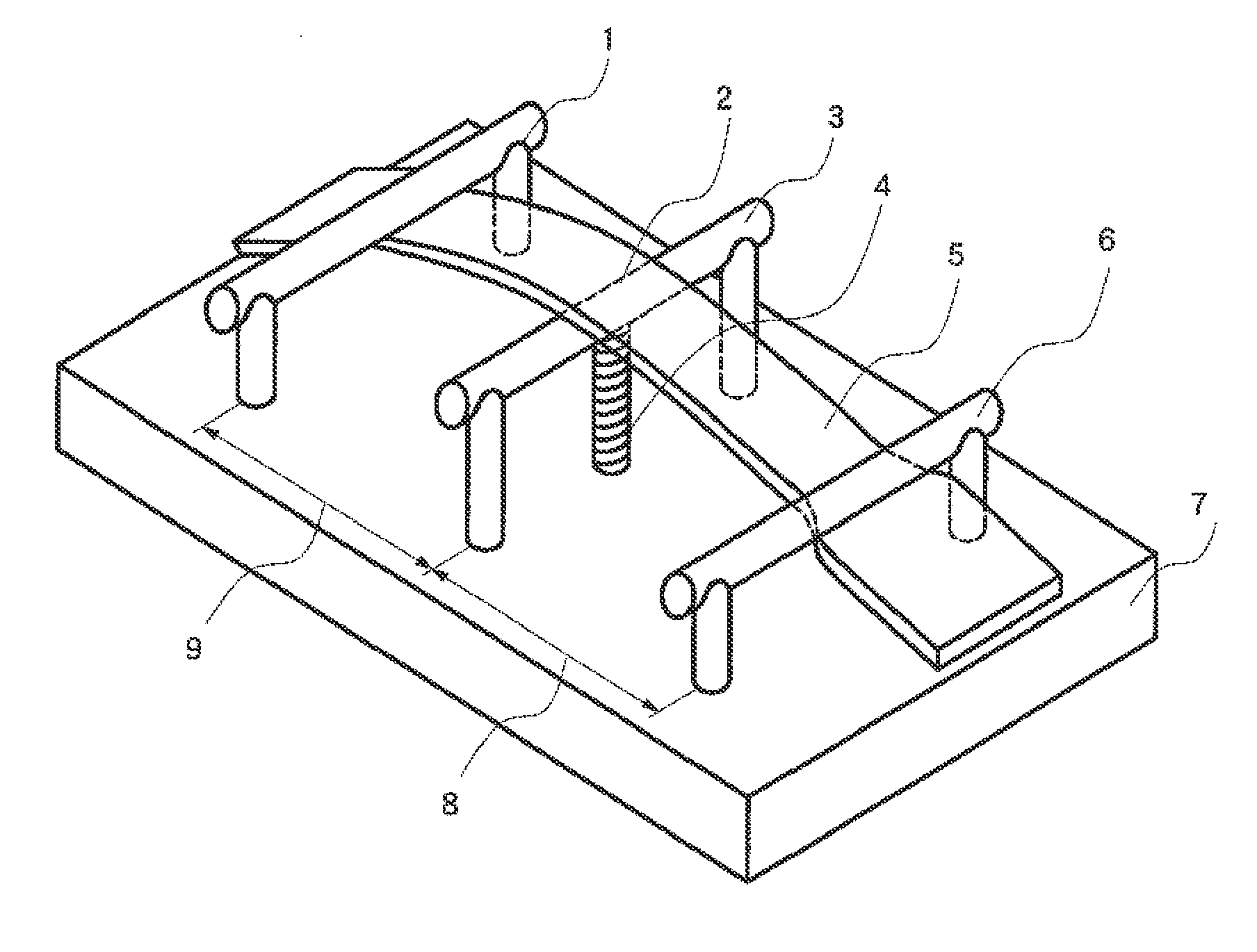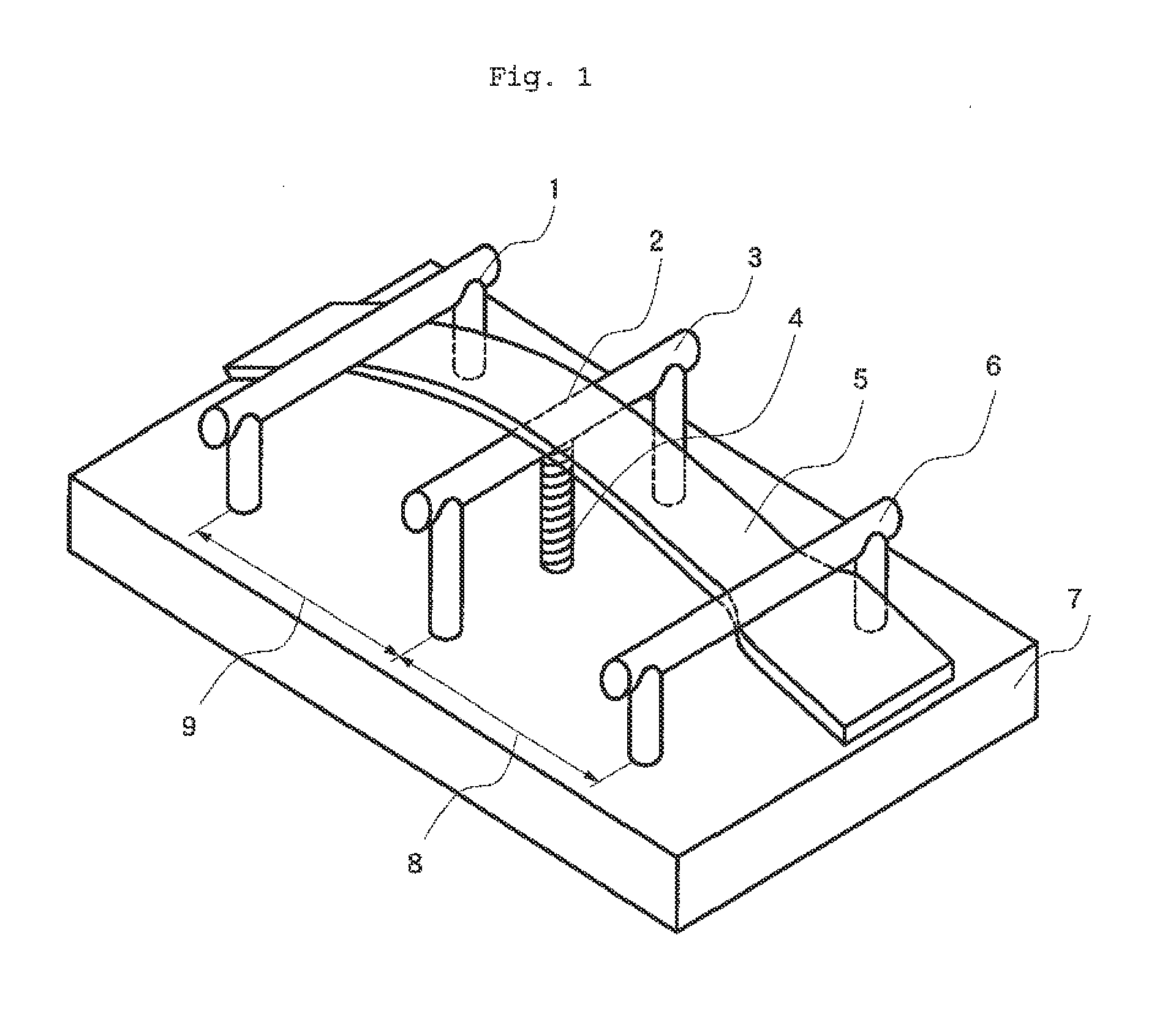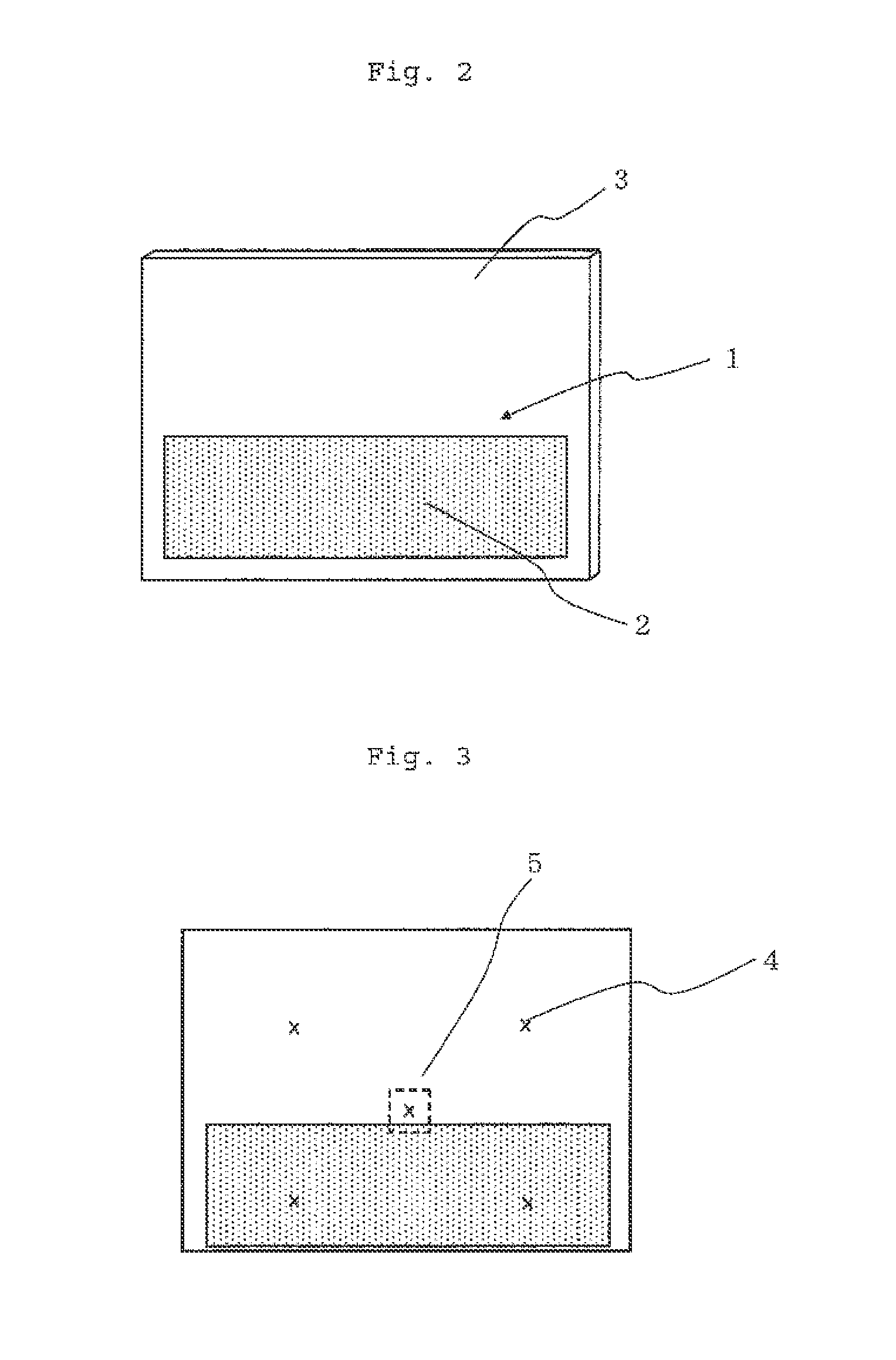Resin composition, molded article, and production methods thereof
a technology which is applied in the field of resin composition and molded article, can solve the problems of difficult to achieve stereo-complexification to a sufficient level, significant low hydrolysis resistance, and unsatisfactory properties of polylactic acids such as mechanical properties and heat resistance, and achieve excellent hydrolysis resistance, good heat resistance and chemical resistance, and small burden on the environment
- Summary
- Abstract
- Description
- Claims
- Application Information
AI Technical Summary
Benefits of technology
Problems solved by technology
Method used
Image
Examples
first embodiment
Resin Composition
[0072]A resin composition of the present invention is a resin composition comprising 100 parts by weight of thermoplastic resin (component A) and 1 to 200 parts by weight of polylactic acid (component B).
[0073]The thermoplastic resin (component A) is preferably a polycarbonate resin, polyester resin, polyolefin resin or styrene resin. These may be used alone or in combination of two or more.
(Aromatic Polycarbonate Resin)
[0074]An aromatic polycarbonate resin (hereinafter may be simply referred to as “polycarbonate”) is obtained by reacting a dihydric phenol with a carbonate precursor. Illustrative examples of the reaction method include interfacial polycondensation, melt transesterification, solid-phase transesterification of carbonate prepolymer, and ring-opening polymerization of cyclic carbonate compound. The component A is preferably the aromatic polycarbonate resin, particularly preferably a bisphenol-A-based aromatic polycarbonate resin.
[0075]Specific examples ...
second embodiment
[Molded Articles]
[0273]The present invention includes a molded article that comprises a polylactic acid (component B) showing a proportion (R195 or higher) of melt peaks at 195° C. or higher to all melt peaks in a temperature rising process in measurement by a differential scanning calorimeter (DSC) of at least 20%.
(Component B)
[0274]The polylactic acid (component B) is as described in the above section of the first embodiment. Thus, the component B preferably comprises a polylactic acid (component B-1) that comprises 90 to 100 mol % of L-lactic acid unit and 0 to 10 mol % of D-lactic acid unit and / or units other than lactic acid and a polylactic acid (component B-4) that comprises 90 to 100 mol % of D-lactic acid unit and 0 to 10 mol % of L-lactic acid unit and / or units other than lactic acid, and the weight ratio of the component B-1 to the component B-4 (component B-1 / component B-4) is preferably within a range of 10 / 90 to 90 / 10.
[0275]The R195 or higher of the component B in the ...
production example 1
Production of Component B-3
[0334]50 parts by weight of L-lactide (Musashino Chemical Laboratory, Ltd.) was charged into a polymerization tank, the inside of the system was substituted with nitrogen, 0.05 parts by weight of stearyl alcohol and 25×10−3 parts by weight of tin octylate as a catalyst were added, and polymerization was conducted at 190° C. for 2 hours to obtain a component B-3. The obtained component B-3 had a reduced viscosity of 1.48 (ml / g), a weight average molecular weight of 110,000, a melting point (Tm) of 158° C. and a crystallization point (Tc) of 117° C.
PUM
| Property | Measurement | Unit |
|---|---|---|
| temperature | aaaaa | aaaaa |
| mol % | aaaaa | aaaaa |
| mol % | aaaaa | aaaaa |
Abstract
Description
Claims
Application Information
 Login to View More
Login to View More - R&D
- Intellectual Property
- Life Sciences
- Materials
- Tech Scout
- Unparalleled Data Quality
- Higher Quality Content
- 60% Fewer Hallucinations
Browse by: Latest US Patents, China's latest patents, Technical Efficacy Thesaurus, Application Domain, Technology Topic, Popular Technical Reports.
© 2025 PatSnap. All rights reserved.Legal|Privacy policy|Modern Slavery Act Transparency Statement|Sitemap|About US| Contact US: help@patsnap.com



